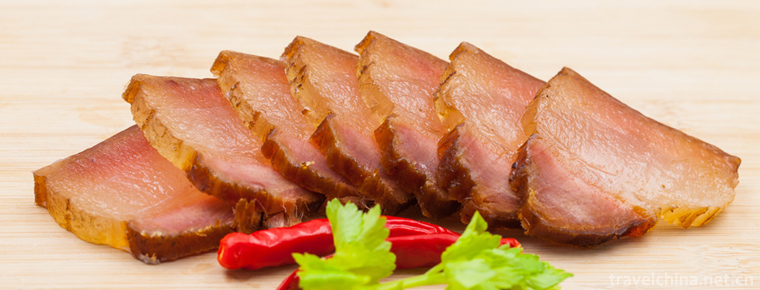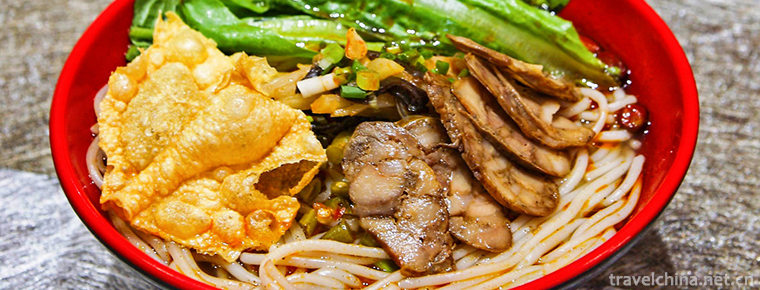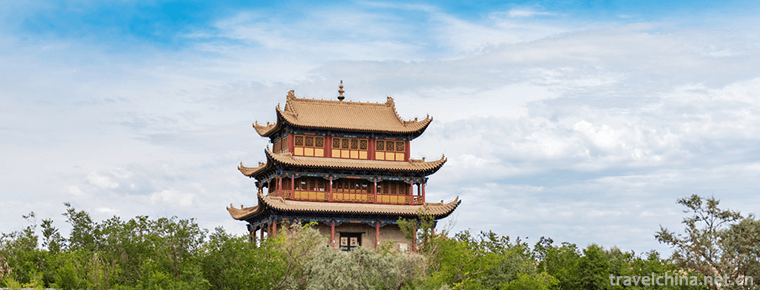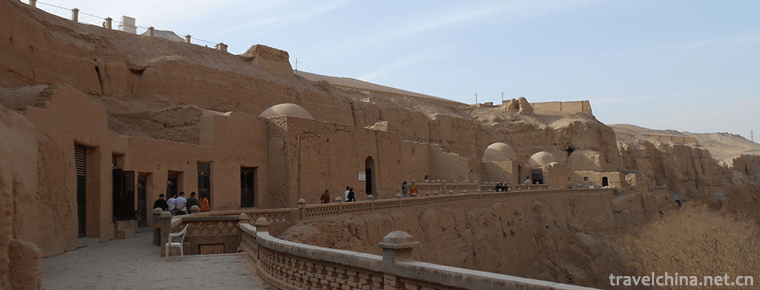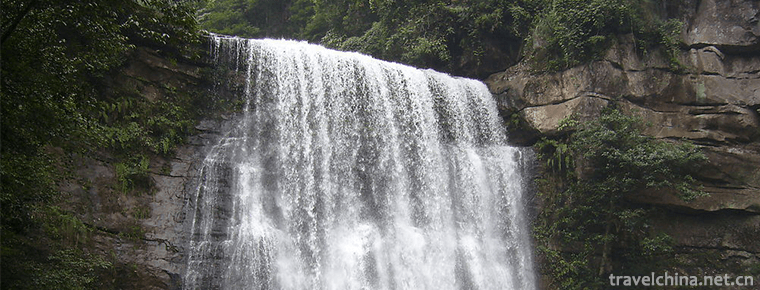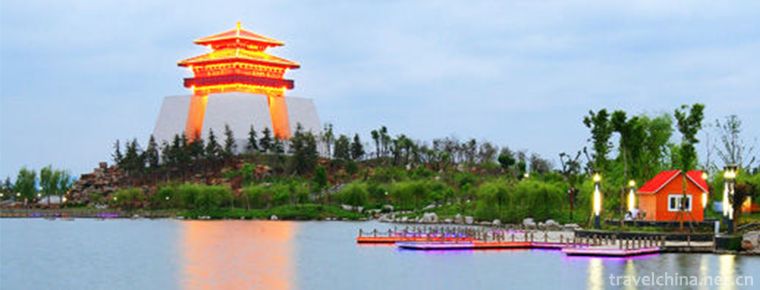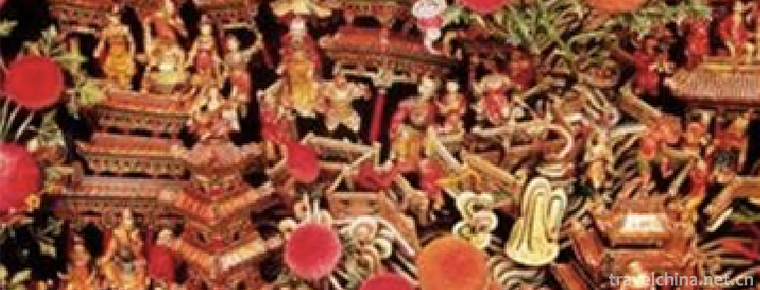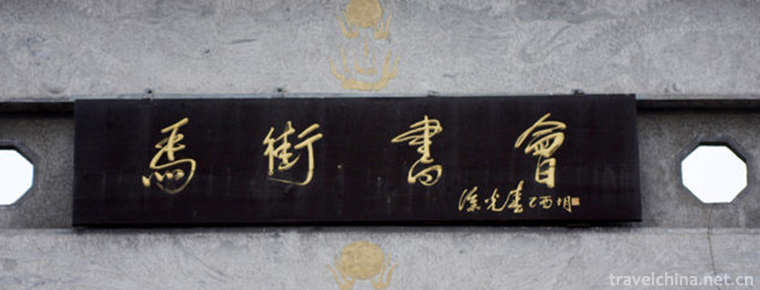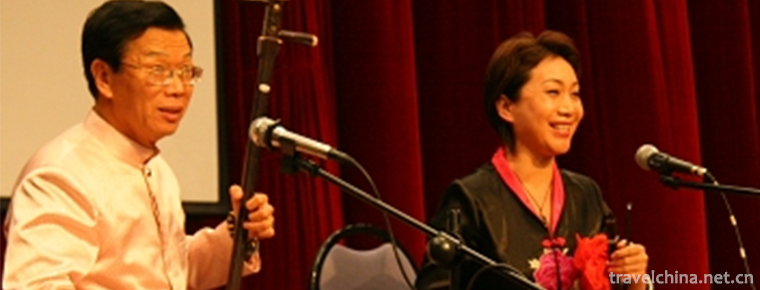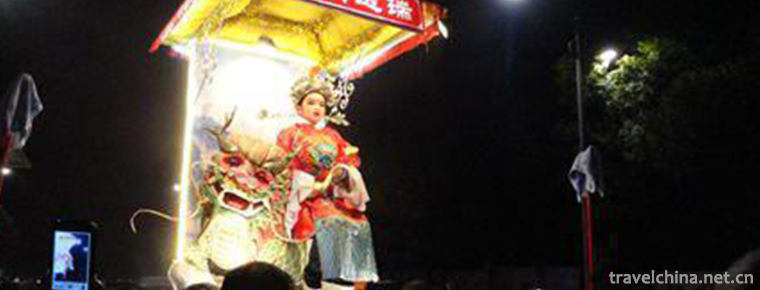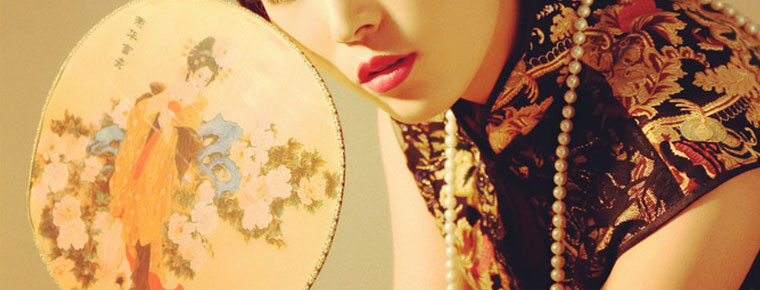She Costume
She Costume
She nationality's men and women's clothing is basically the same as that of the local Han people. However, the She ethnic costumes in Fujian and Zhejiang provinces with relatively concentrated population still have certain national characteristics, especially the She women in Fujian Province, which are distinctive and colourful due to their geographical and marital status. She women's hairstyle in northeastern Fujian is called "Phoenix bun". Before the age of 16, girls used red velvet to wrap their braids around their heads, leaving "Liuhai" on their foreheads and "Buni Head" on their foreheads. The hair style of adult married women is called "Shanhana Tou", which varies slightly with different regions. Hair styles popular in Fujian Hou, Fuzhou, Gutian, Lianjiang, Luoyuan and Flying Luan along Ningde South Road are called "Fengtou buns". Hair styles popular in most areas of Fuan and Ningde are called "Fengshen bun" and those popular in Fuding and Xiapu West Road are called "Fengsheng style". In southern Fujian, some She village women's hairstyles in Western Fujian are also different from those of local Han people, such as Zhangping, Huaan, Zhangpu, Changtai and other counties. She women in northern Fujian are equipped with 100 silver hairpins, red ropes and material beads to form "fan-shaped buns". She women's hair ornaments in southwestern Zhejiang are called "Du".
On June 7, 2008, she costumes were approved by the State Council to be included in the second batch of national intangible cultural heritage list.
historical origin
She costumes were basically the same in Ming and Qing dynasties in Fujian, Zhejiang, Guangdong and Jiangxi provinces. Zhou Jie, male and female, "No heat or cold, all clothes are linen." Volume 12 of Jingning County Chronicle, Affiliated Shemin, 11 years of Tongzhi in Qing Dynasty (1872). "Tongwulu" Ming Wanli "Yongchun County Records" Volume 3, "Customs". Or tie your legs. "The man has no hat, broad sleeves and short shirt, and his spine is tightly tied" (Li Ba: Reprint of Tingzhou Chronicle, Volume 45, Cong Tan Fu, Tongzhi 6 years (1867)). "Never wear clothes without finishing alone". Wei Lan, Female "Broad collar and small sleeve": She Guest Customs, 32 years of Qing Guangxu (1860). "Short cloth belt, skirt does not cover the knee." Fu Heng: Huang Qing Gongtu Volume 3, 16th year of Qianlong in Qing Dynasty (1751). "There is no custom of footbinding" (Yu Shaosong: Longyou County Chronicle Volume 2, Geographic Examination 5 Customs). Hair styles vary significantly depending on the region and whether they are married or not, or whether they are "tall and drooping" (Lu Weiying: Hou Guan County Local Records Volume 5, Human Beings). Li Ba: Tingzhou Prefecture annals. Or "broken bamboo as the crown, wrapped in cloth, patches, decorated with pearls, pearls, all five-color pepper beads." Zhou Jie: "Jingning County Chronicle." Wu Yiyao, Yongding, Fujian Province, praised the rich and colorful She Nv in Sanyao Song: "The new grass beads in the family are light, and the makeup is not sentimental. Not accustomed to the world Shi Fan Dai, Ming Ming Hao Teeth are born "(quote Yang Lan: Linting Huikao Volume 3, Custom Examination 5 She Min Fu).
She people, both men and women, like to have gold teeth inlaid, usually one on the left and right sides of the upper teeth. Between talking and laughing, the golden sparkle, there is a different flavor.
Dress pattern
Most of the creators of She costume patterns are native working women.
They make clothes for their own use and are not restricted by the demand for goods. In the process of design and production, they can do whatever they want and create their own ideas. With embroidery or weaving and embroidery in the middle of skills, all proceed from the actual life, so that these costume patterns are flourishing and shining, showing distinct national artistic characteristics. The content and style of costume patterns are often free and unrestrained. They sew flowers and plants in the mountains, birds in the woods, clouds in the sky and rainbows after rain on their clothes and skirts. This kind of simple artistic emotion originates from life, which makes the costume patterns painted in their hands lively.
content
She costume patterns are mostly based on various living images in daily life. Such as birds and animals, flowers, birds, insects, fish, farmhouse vehicles and horses, as well as traditional geometric patterns - such as Wanzi, cloud head, cloud hook, dragon pattern, leaf pattern, etc. Some of them are arranged and combined into patterns. There are primitive and regular scripts in the form of characters, and some old auspicious words are often used, such as "Five generations of Qichang", "Three Yuan and Di", "Recruiting wealth and advancing treasures" and so on. Another example is the square pattern symbolizing farmland, the color stripe pattern symbolizing rivers and the cross pattern symbolizing trees, all of which have been retained as a relatively fixed pattern.
modelling
The creator pays attention to the harmony between humanism and the spirit of art symbols. No matter how the shape changes, as long as the concept is fully embodied in the image, it is the most ideal paradigm. It does not discuss the imitative relationship between art and images at all, nor does it consider the idea of employing people to break the original form provided by nature to art. All existence can be regarded as the object of spiritual demand in the material activities of workers. Therefore, instead of using light and shadow as the main means of expression, patterns adopt traditional Chinese line-drawing or near-line-drawing, and single line as the modeling method of pattern contour. Girls are good at capturing the main features of an image and showing the most characteristic dynamics in a silhouette-like way. But when they make patterns, they are not satisfied with a specific image, but on the basis of realism, they use deletion, addition, exaggeration, deformation and other means to make the image more idealized. They often make use of points of different depths, lines of different lengths, planes of different sizes and specious shapes to make them both changeable and harmonious in a pattern.
Coloring
After creating the ideal image, women strive to pursue the rich color and strong sense of gorgeousness. She nationality advocates black and blue, and takes black and blue as the main tone in dress, which is dignified and deep, solemn and simple. On the basis of black and blue as the main tone, some add some colorful lace or scarf, waistband and so on, which add a little spice. She women's rainbow-shaped plackets are mosaic of five broad sections of blue, red, white, green, black cloth or satin. Some of the color sleeves are mainly red, yellow, green, blue and purple. In short, the design is based on the color pattern of the rainbow. It also contains some symbolic meanings, such as blue for the sky, green for the grassland, red for the sun and so on. She people's rainbow-style flower plackets are colorful, harmonious and beautiful, but there are different ways of expression in different places. She people in Fuan and Ningde of Fujian Province Embroidered Black patterns on blue-green jackets, water-red, yellow, green and other horse-tooth patterns on collars, with a red strip three or four centimeters wide along the edge of the dress, and an embroidered corner puppet pattern at the bottom of the sleeve. She women's clothes in Fuding area are more gorgeous. Peach is the main color of their blouses, and other color lines are added. The area of embroidery patterns is large, and the flowers are also large. There are two bayberry blossoms at the bottom of the collar and the cuff. The collar is mostly red and green with embroidery. Cuff edges, a red, a green, strong contrast. The color of Luoyuan She women's clothing is concentrated on the collar, which is arranged in a hierarchical and orderly pattern of willow stripes from red, yellow, blue, green, water-green, black and other colors. Embroidered on the black bottom of the collar some natural patterns of thick lines, mostly water red and yellow. The pattern of apron is characterized by the cloud pattern of big flowers and the willow stripe pattern at the skirt edge. The color combination of She nationality's clothing is mainly red and green. They call it Phoenix make-up or cock dress. They think they imitate cock's colorful feathers. In short, they are very good at choosing a variety of strong contrast colors, but in the arrangement of color, often do not make a large area of contrast, but use small area of fine uniform contrast to make the color both rich in change and harmonious unity. At the same time, these mottled and changeable color patches are unified with very deep or very light background color and striking and powerful contour lines. This method of setting colors can make the colors varied but not miscellaneous and bright without jumping. Even the most prominent block color can be integrated into the whole tone, rather than drifting away from the screen.
Composition
Despite the change of density and dispersion of patterns, compared with the composition of paintings, it does not emphasize the prominent theme and does not stress the change of the relationship between subject and subordinate. Most patterns adopt the composition method of full-floor flowers to meet the requirements of the overall sense of clothing. Sometimes dozens of patterns are selected in an embroidery piece to form the main pattern freely and irregularly, or to hide flowers in the flowers, or to synthesize flowers such as birds, insects, etc., or to share a wing with several birds. This ingenious conception shows their wisdom and dexterity. They adopt different formats according to different decorative parts. Generally speaking, symmetrical or balanced structure, radiation layout, and the echo of tufts and horns have been repeatedly and widely used in the composition of patterns, thus showing the unique artistic strength of costume patterns.
connotation
These patterns not only beautify clothes, but also have profound meanings. Their techniques can be roughly summarized as homophonic, moral and symbolic. Homophonic, that is to say, by means of sound, such as mandarin duck spouse, five blessings (bats) to celebrate longevity. Moral, by means of an object or a group of pictures, implies a good thing, such as four agreeable. Some patterns have both homophonic and moral meanings in their expressive techniques, such as Fushou Shuangquan. The concept of folk art creation is the unity of individual consciousness and collective consciousness. Collective consciousness is a collective mind which has been inherited for a long time. It penetrates into the object historically through the practice of the subject, making the objective objects related to the vital interests of people gradually immobilized as the substitutes of ideas and become specific symbols, such as the ideal head embroidered on shoes.
The dress pattern of She nationality contains the essence of artistic creation of the masses of people for thousands of years. It has very high artistic value and profound cultural connotation, and its content is very rich. The most amazing thing is that these ordinary working women not only use wooden looms to weave coarse cotton cloth, but also add countless exquisite works of art to the treasure house of human art over a long period of time with simple and ordinary tools and materials such as a needle, several strands of thread and small wax knife, which is really worth cherishing forever.
Costume Style
Men's clothing
She men usually wear colored linen round collar, winter suit without waist cotton trousers. The old man wears a black cloth headscarf and a jacket on his back. The wedding dress is a blue gown, while the red gown is worn for ancestors'worship. She women's clothing is characterized by the Phoenix dress, which symbolizes everything goes well. It is embroidered with various colorful patterns and inlaid with gold and silver thread on the dress and apron, with red-headed rope tied on the high coiled head, and silver wares tinkling all over the body. She people like blue and green best, and red, yellow and black are also popular. The pattern of dress stripes is arranged in an orderly and distinct order, and the collar is often embroidered with some water-red and yellow patterns. She costume features are mainly reflected in women's dress, called Phoenix costume.
She men's traditional clothes in eastern Fujian are blue-black or blue large-skinned shirts. The large-skinned hemp shirts used in summer have good sweat resistance, wear resistance, ventilation and permeability. Their styles are skirt and collar-less, with blue collar and cotton shoulder-lining. In winter, the large-skinned clothes worn by She men are mostly made of cotton cloth, so they are also called cotton clothes. The men's wedding dress is a red-crowned Black Satin official hat, similar to the Qing Dynasty official hat, blue or red long shirt, with embroidered patterns on its chest and chest, dragon-phoenix jacket, a dragon-embroidered pattern on its breast and chest, white cloth socks with foot patterns, and round black cloth soles.
There are two styles of dress for She men, one is the usual large-skinned blue linen blouse, the other is the dress for marriage or ancestor worship, red-crowned Black Satin hat, blue or red long shirt, coat of dragon and Phoenix horse jacket, long shirt with dragon embroidered pattern on the front of the breast, foot white cloth socks, round black face cloth sole shoes. Since they have been living together with the Han people for a long time, few of them have worn these two kinds of clothes, and their dresses are no different from those of the Han people.
Women's clothing
She women's clothing has its own characteristics. Most of them are made of self-woven ramie cloth. They are black and blue. Most of them are black. The clothes are right-open. Coloured laces are mostly set on the collar, cuffs and right-open. Generally speaking, the clothes of middle-aged and young women have more flowers and wide edges. They are all wearing an apron more than one foot wide, with a flowery belt around their waist, also known as a bandage with handkerchief, which is four centimeters wide and more than one meter long. There are various decorative patterns on it, as well as some auspicious phrases embroidered with the words "a hundred years of happiness" and "five generations of prosperity". Others are made of blue printed cloth, which has a unique style. The clothes and aprons are also embroidered with various flowers, birds and animals and geometric patterns, which are very colorful and beautiful. In addition, in some areas, she women wear short black skirts and spiky embroidered shoes; some like to wear a dress; skirt length and foot, embroidered around lace, white clouds in the middle; others wear shorts all year round, with sawtooth-shaped lace at the feet, wrapped in black legs, barefoot.
She women's hair style is the most noticeable decoration. Married women, in particular, have their hair combed from the back into a tubular bun, like a cockscomb hat on the back of the head, with red velvet loops between the hairs. Some people put a small bamboo tube five or six centimeters long on the top of their heads, and comb their hair around the bamboo tube into a spiral shape, which is very unique. When combing your hair, you should not only wipe it with tea oil and water, but also with wigs, so it looks tall, fluffy and bright. When getting married, the bamboo tube should be wrapped in red cloth, decorated with silver chains and silver medals, and wrapped around a string of stone beads. Some of the front tops are also surrounded by silver head flowers in a ring, head flowers along the edge of numerous silver balls, silver pieces and other decorations fall in front of us. Unmarried girl's hair style is relatively simple, only comb the hair flat around her head, tighten it with red wire harness. However, many She girls have their hair cut short or their braids combed. She women often wear large earrings, silver bracelets and rings, and wear delicate hats when they go out. Douli is a famous weaving handicraft of She Nationality. It has fine workmanship and various delicate patterns on it. It is made of more than 200 fine bamboo silks one millimeter thick. It has beautiful shape. It is also matched with water red ribbon, white silk ribbon and colored beads. It is more delicate and beautiful. It has become the most favorite decoration of She Nationality women.
Female costume decoration
She women's jewelry is called "gie" in She language. It used to be worn when they got married, and later when they went out or on festivals, they also wore it when they died. Dressed as: the back of the head, hair bun around the feet, black crepe yarn, head top of the bamboo tube with silver foil package (about an inch in diameter, about three inches in length, the rich all with silver), wrapped in red pa, vertical two silver hairpins, forming a blunt triangle, nailed eight string of ceramic beads, ceramic beads around crepe yarn to fix the "gie" body, ceramic beads hanging over the shoulders, each end bolted with a small silver plate, right ear inserted a silver hairpin, two ears. Wear silver earlobes. It looks like the crown of a phoenix bird. The jacket is a large-skinned shirt, over knee length, embroidered lace at collar, sleeve and skirt. The lace is bright in color and various in color. Fabric quality, the old society for self-woven linen, silk, polyester have. A waist-tied apron is a linen piece one foot long and one foot five wide. It is dyed blue or blue, with red cloth to stop the waist and tied with a ribbon. In the past, men and women were the same, with wide pants and straight slacks with laced legs. In the old society, men wore long-skinned shirts when going out and short-skinned shirts when working, all of which were straight-skinned shirts. In the past, she people used to wear straw shoes and wooden clogs at home. Wear cloth socks in winter and walk with brown feet on snowy days. Flower shoes, blue and blue cloth, embroidered patterns around, hard nose in front, red reel, women than men more fine patterns, usually do not wear, for shoe life.
Phoenix Dress
She costume features are mainly reflected in women's dress, known as "phoenix dress": the long braids of red-headed ropes coiled on the top of the head, symbolizing the phoenix; the garments and aprons (hand-shawls) are embroidered with bright red, peach red, apricot yellow and gold and silver thread to embody the colorful lace patterns, symbolizing the neck, waist and feathers of the phoenix; the golden belt fluttering behind the waist, symbolizing the phoenix. Phoenix tail; the tinkling silver ornament worn all over the body symbolizes the phoenix. Married women usually wear Phoenix crowns on their heads. It is made by hanging a red ribbon more than 30 centimeters long and 3 centimeters wide on a red cloth pad outside a refined bamboo tube. There is a round silver medal on the crown, three small silver medals hanging on the forehead, called "dragon bun", which means the Phoenix crown worn by the "three princesses".
She women's clothes are mostly made of self-woven ramie cloth, with black and blue, mostly black. The clothes are right open, and the collars, cuffs and right flaps are mostly inlaid with color lace.
She women's "Phoenix Dress" has strict distinction with age. There are three kinds: big, small and old: "Little Phoenix Dress" is worn by minor women. Its style and dress style are similar to "Big Phoenix Dress", which is simple, lively and lovely, while "Old Phoenix Dress" is worn by older women with lower head bun, single color and pattern of clothes and belts, reflecting solemn and calm demeanor. Legend has it that Panhu King, the ancestor of She Nationality, led his people to fight in the north and south, and then moved to Fenghuang Mountain in Guangdong Province to multiply. In order to occupy the mountain as the king, he took the legendary beautiful Phoenix as his totem symbol. All daughters of her Nationality were given Phoenix costume, which has been handed down from generation to generation, and has been passed down to the present day.
Phoenix dress is the most distinctive in the eastern Fujian counties, usually with large cardigan. Its common feature is that jackets are embroidered. Especially Fuding and Xiapu women's jackets in Fujian have various embroidery patterns and flowers, birds, dragons and phoenixes patterns on collars, large breasts, dresses and even cuffs. In hot climates, women wear shorts, leggings and colorful bands around their waists every season. Hair coils are combed on top of the head, in a spiral or disc shape, wound in red velvet.
But clothes vary slightly from place to place.
Fuan's Phoenix jacket sews a red cloth edge of 3 to 4 centimeters along the edge of the dress bucket, and Embroiders half a square corner pattern at the bottom of the edge by the sleeve. She family said that this was the golden seal of the ancient King Gaoxin when he gave it a seal. Fuding women's dress has two red embroidery ribbons longer than the skirt on the right side of the sleeve. Xiapu County She women's jacket size is special, that is, the front and back are equal in length, there is a dress fight on the big side, small side is also a dress fight, easy to turn over, when guests wear the front, daily wear the back at home, at the same time, according to the number of embroidered red lace clothes are divided into "one red dress", "two red dress" and "three red clothes".
Legend about Phoenix Dress
King Panhu, the ancestor of She Nationality, married his daughter, the three princesses, because of Pingfan's merits. When she got married, the empress put on her daughter a phoenix crown and a phoenix dress with jewels. She wished her to bring auspiciousness to life like a phoenix. When the three princesses had children, they dressed their daughters like phoenix. When her daughter got married, Phoenix came from the title of Phoenix Mountain in Guangdong to dress her as a wedding dress. From then on, she women wore Phoenix clothes to show good luck. In some places, the bride is called "Phoenix" directly. Because the bride has the lofty status of "three princesses", she does not kneel when worshipping ancestral tablets in the groom's house.
Female Phoenix crown
Before liberation, she women wrapped their heads in flower cloth in winter and summer, with bamboo crowns and stone beads, whether they were unmarried or not. Its headdress is tied and tied, with bamboo as its crown, naked cloth and patches; pearls are adorned with pearls, which are all five-color pepper beads. Adult women's hair style dresses Phoenix style, combing single braids in the back of the head, bunting hair around the feet with black crepe yarn, the top of the head with a silver foil bamboo tube (about 1 inch in diameter, 3 inches in length, silver for wealthy households), wrapped in red cloth, silver hairpin tall, four long ceramic beads and a string of red and black ceramic beads on crepe yarn, inserting a silver hairpin, with eight small silver brand ceramic beads at the end. Fall to your ears. This kind of headdress, commonly known as "Fengguan", is called "Du" by the Han people and is traditionally given by Emperor Gaoxin. This kind of primitive decoration commemorating the ancestors is usually worn at the time of marriage and later on festivals or visits. Usually, when working, they are wrapped in blue cloth towels or towels. Few people wear the "phoenix crown" nowadays. Some She villages only wear it when they receive visitors or major festivals.
"Du" accessories: pliers, head, big Qixi, Qixi card, Qixi load, bone earning, pliers, square card, earrings, head grasp, ancient money, toothpicks, ear digging, banana leaves, silver hairpin, silver chain, beads, cloth and cotton thread.
She Phoenix crown needs silver 4,28 yuan, of which:
Silver hairpin: forged with one silver dollar, two fingers wide, 10 cm long, such as eye fish bone shape, on the pattern, for the top of the bolt hair tightening.
Headflowers: Hair ornaments. Wedding head flower, a group of three, carved characters, animal patterns, fine production.
Earrings and earrings: matching with Panlong bun, earrings are usually made into the shape of a flip question mark; earrings, near the ear, are curved, hanging silver.
The Phoenix crowns of She nationality are slightly different in shape. They can be divided into Fu'an style, Luoyuan style, Shunchang style, Jingning style and Lishui style. Fujian style, some also depend on the age of She women tied into "old phoenix" and "young phoenix", Zhejiang Jingning, Lishui Phoenix crown, in the production of "Toushan" line is also different. Simple people take red silk as their main purpose, while delicate "Toushan" is composed of silver slices and beads, which shows many implications. For example, the top silver film is a bird, a phoenix, and a pair of "Pisces" is used to symbolize the marital couple (the folk has been patterned as "Double Happiness"), or a prismatic silver film affixed with "Double Colors" is used to describe the "Four Seas". It means that the marital couple is very good, such as a fish getting water and always marrying a couple, so the old-fashioned unmarried woman does not wear a phoenix crown. "Pisces" is also embellished with silver and Pearl reels like "money in ancient Chinese". Generally speaking, it seems to imply the meaning of national unity, family harmony and talent prosperity. The two complement each other and have profound implications.
Cultural Inheritance
Jingning established the She Culture Research Society to protect, inherit and carry forward the traditional She culture.
Opening of Xiaoqin She Nationality Garment Art Museum in Jingning She Nationality Autonomous County
On May 16, 2015, the Xiaoqin She Garment Museum in Jingning County, located in the mountainous area of southern Zhejiang Province, reopened free of charge after renovation. The exhibition hall of the Museum covers an area of more than 750 square meters and contains more than 800 pieces of She costumes, ribbons, silver ornaments, embroidery and other folk crafts.
She costumes were exhibited in non-hereditary handicraft creation exhibition
Lan Yanlan, a non-hereditary inheritor selected by Jingning County Non-Heritage Center, was selected to participate in the provincial non-material cultural heritage traditional handicraft theme creation exhibition of "China Dream, Beautiful Zhejiang".
"China Dreams Beautiful Zhejiang" was held in Tongxiang during the National Day of the provincial intangible cultural heritage traditional crafts theme creation exhibition. The purpose of the exhibition is to use vivid images and popular forms to explain the "Chinese Dream", to elucidate the patriotism of the people, the aspiration of strengthening the country and the aspiration of serving the country, and to reflect the aspiration and pursuit of the people of Zhejiang to "build a beautiful Zhejiang and create a better life". A total of 587 works were selected and presented throughout the province. After careful evaluation by the expert evaluation committee, 314 works were exhibited and 102 prize-winning works were awarded.
Perfect Closing of the Second She Dress Design Competition
On April 3, 2014, the 2nd China (Zhejiang) She dress design competition ended perfectly in Jingning, She Township, China. Eventually, six players, such as Lan Jinmei, stood out and won the gold, silver and bronze prizes in the competition. At the same time, five of them won the excellent prizes. A total of 815 entries were received from the She dress competition nationwide.

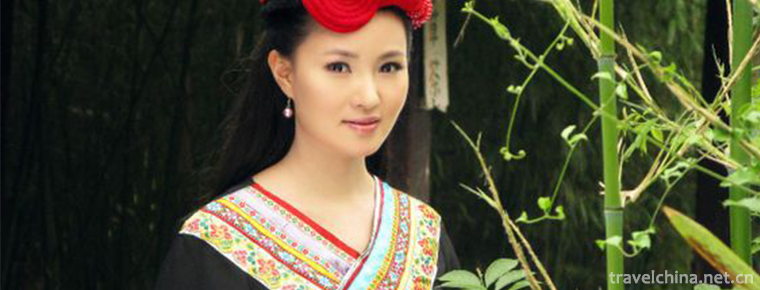
-
Chinese bacon
Bacon refers to processed meat processed by salting and then baked....
Views: 157 Time 2018-10-12 -
Snail rice noodles
Snail jelly powder is a kind of snack rice flour in Liuzhou City, Guangxi Zhuang Autonomous Region. It has the unique flavor of hot, cool, fresh, sour and hot. is the most famous local snack in Liuzho.
Views: 315 Time 2018-11-05 -
Jiayuguan cultural relics scenic spot
Jiayuguan: World Cultural Heritage, National AAAAA Tourist Scenic Spot, National Key Cultural Relics Protection Unit, National Patriotic Education Demonstration Base..
Views: 158 Time 2018-12-12 -
Bezeklik Thousand Buddha Caves
The Qianfo Cave in Bozikrik is located on the cliff on the West Bank of the Wood Trench, 45 kilometers east of Turpan City, Xinjiang. There are 83 caves and 57 caves.
Views: 133 Time 2019-01-02 -
Huangjinglaolin Scenic Spot
Huangjing Old Forest Scenic Spot is located at the junction of Sichuan and Guizhou provinces in southern Sichuan Province and northwest Gulin County. Its total planned area is 9122.6 hectares.
Views: 104 Time 2019-01-18 -
Zaozhuang Old Street Shuicheng South Shandong
Shuicheng Zaozhuang Old Street in Southern Shandong Province is located in the middle section of Xichang Road in the Central District of Zaozhuang City, Shandong Province. .
Views: 154 Time 2019-02-06 -
Sweat green
"Khan Qing Gele" is a heroic epic of the Mongolian people in Haixi. In the form of rap and speech, it tells the story of the Mongolian heroes destroying demons and saving the people, flashin.
Views: 207 Time 2019-05-02 -
Ma Street book fair
The Majie Book Club is a grand Chinese folk music festival. Located 5 kilometers south of Baofeng County, Henan Province, it is a "pilgrimage site" for rap artists all over the country. Ever.
Views: 158 Time 2019-05-15 -
Shandong Qinshu
Shandong Qinshu is one of the traditional folk art varieties in Shandong area, also known as "Xiaoqu", "Yangqin", "Shandong Yangqin", "improved Qinshu" and so o.
Views: 186 Time 2019-06-13 -
Raise the Pavilion
Lifting the pavilion, also known as the pavilion, is a unique traditional folk dance that integrates historical stories, myths and legends, and integrates painting, opera, tie-up, paper sculpture, acr.
Views: 138 Time 2019-06-18 -
Cheongsam and fan
As the saying goes, the pipa is half covered. What did ancient beauties use to cover their faces? The first reaction must be a fan! Fans are also the most common accessories in ancient times. Men use paper fans and women use round fans. Chinese traditional fan culture .
Views: 352 Time 2020-12-11 -
Meishan peoples life
In 2019, the per capita disposable income of urban residents is 36743 yuan, an increase of 9.0%. The per capita consumption expenditure of urban residents was 23554 yuan, an increase of 12.0%; the per capita disposable income of rural residents was 18177.
Views: 341 Time 2020-12-18
